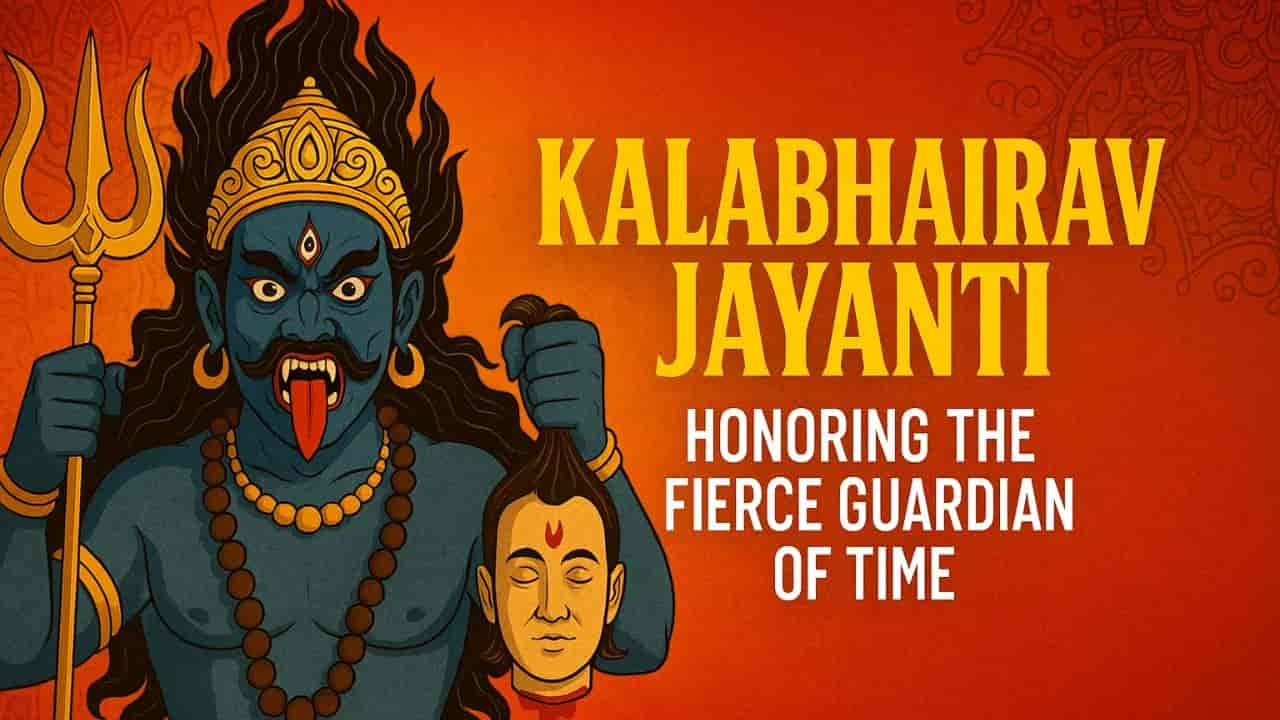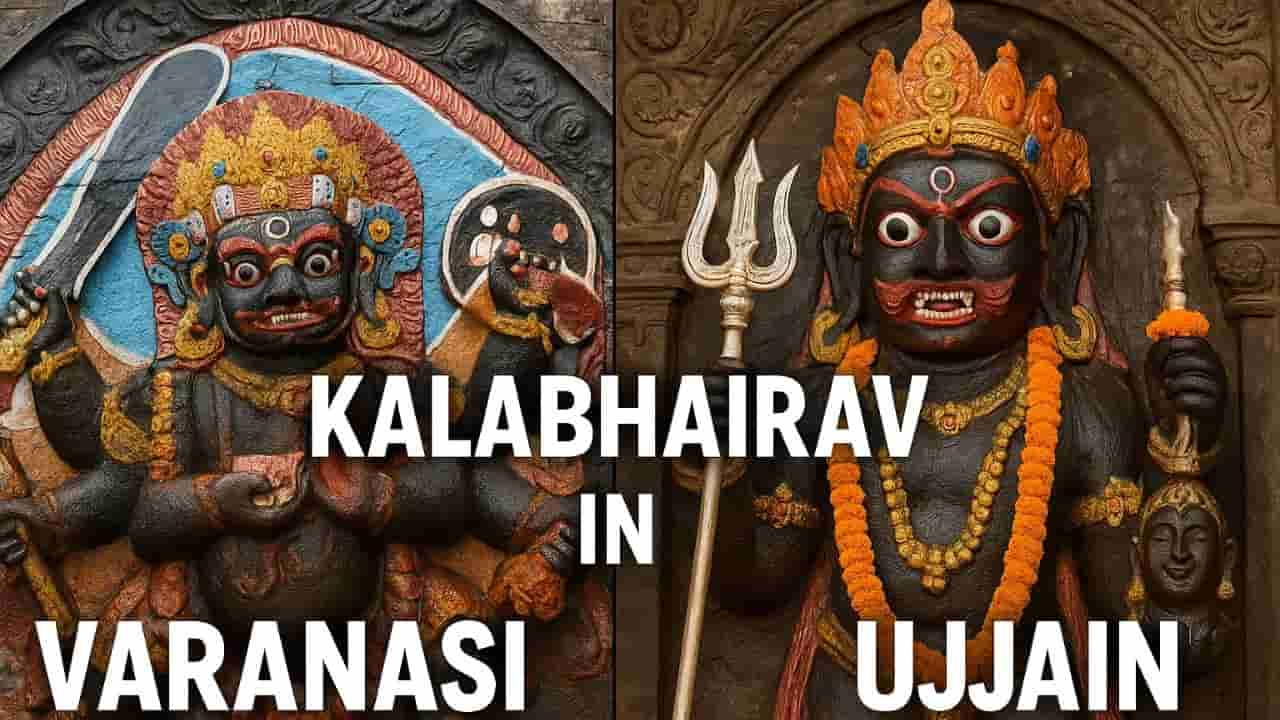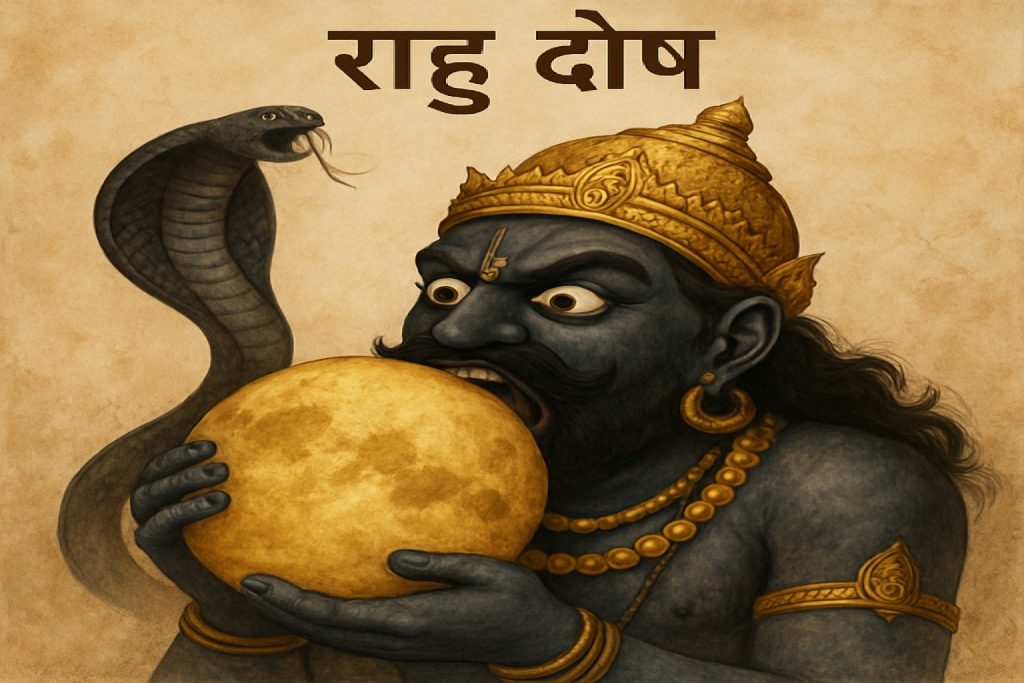
A Night of Reverence and Fearlessness
Kalabhairav Jayanti is one of the most intriguing festivals in the Hindu calendar. It commemorates the birth of Lord Kalabhairav, a fierce manifestation of Lord Shiva, who is revered as the guardian of time (Kala) and the protector of the universe.
Falling on the eighth day (Ashtami) of the Krishna Paksha in the month of Margashirsha (November-December), the day is observed with midnight vigils, rituals, and acts of devotion.
Unlike many other Hindu festivals that celebrate prosperity, joy, or harmony, Kalabhairav Jayanti emphasizes discipline, justice, and the destruction of arrogance. It is a festival that reminds devotees of the inevitability of time and the importance of living responsibly.
The Mythological Origins of Kalabhairav
The legend of Kalabhairav is rooted in the story of Lord Brahma’s pride.
According to the scriptures, Brahma once grew arrogant, believing himself to be the supreme creator and greater even than Shiva. In his arrogance, he insulted Lord Shiva. To curb this pride, Shiva manifested as Kalabhairav, a terrifying deity carrying a trident and a noose, with serpents adorning his body and a ferocious dog as his mount.
- In this form, Shiva cut off one of Brahma’s five heads, humbling him and teaching the lesson that arrogance leads to downfall.
This episode emphasizes the importance of humility and respect in spiritual growth. Kalabhairav thus symbolizes the destruction of ego and the guardianship of cosmic order. He is worshiped as the deity who punishes wrongdoers and protects devotees from fear, negativity, and evil forces.
Kalabhairav as the Guardian of Time
Kalabhairav’s name itself reveals his role;
- Kala means time, and
- Bhairav refers to the fierce form of Shiva.
In Hindu belief, time is the ultimate reality that spares none. By worshiping Kalabhairav, devotees seek his blessings to use time wisely and free themselves from procrastination, fear, and distractions.
In many traditions, Kalabhairav is considered the gatekeeper of temples, especially those dedicated to Shiva. Without his permission, one cannot enter the deeper sanctums of spiritual wisdom.
Symbolically, this means that before reaching higher states of consciousness, individuals must confront and overcome their fears, ego, and illusions.
Kalabhairav Jayanti Rituals and Practices
Kalabhairav Jayanti is observed with unique rituals that often begin at midnight.
- Devotees fast during the day, offering prayers, milk, flowers, and lamps to Kalabhairav idols and images.
- Special significance is given to dogs, his sacred vehicle, who are fed with sweets, milk, and chapatis.
- Feeding and caring for dogs on this day is believed to please Kalabhairav and bring blessings of protection and loyalty.
In temples, particularly in Ujjain, Varanasi, and other holy cities, devotees perform abhishek (ritual bathing) of Kalabhairav idols with milk, oil, and honey. They recite the Kalabhairav Ashtakam, a powerful hymn composed by Adi Shankaracharya, invoking fearlessness and divine grace. The atmosphere is intense yet deeply spiritual, reminding devotees of life’s fragility and the need for discipline.
The festival also encourages charitable acts. Many devotees donate food, clothing, or oil lamps to the needy, believing that service during Kalabhairav Jayanti multiplies blessings. The balance of worship, fasting, and charity makes the celebration holistic, honoring the deity while embodying his values in practical action.
Symbolism of Kalabhairav’s Fierce Form
Kalabhairav’s iconography is rich with symbolism.
- His black or dark blue complexion represents the all-consuming nature of time.
- His garland of skulls and serpents reflects the cycle of death and rebirth, reminding devotees of mortality.
- The trident signifies the destruction of evil and ignorance, while his dog mount represents loyalty and fearlessness.
Though fierce in appearance, Kalabhairav is not a deity of terror but of protection. He destroys only arrogance, injustice, and falsehood, guiding devotees toward humility, wisdom, and discipline. His fearsome form thus acts as a mirror, compelling devotees to confront their own flaws and weaknesses.

Kalabhairav in Varanasi and Ujjain
Kalabhairav is especially revered in Varanasi, where he is worshiped as the city’s Kotwal, or guardian. The famous Kalabhairav Temple in Varanasi sees thousands of devotees during this festival, who believe that no pilgrimage to the city is complete without seeking his blessings. Similarly, Ujjain, one of the twelve Jyotirlinga sites, hosts grand celebrations of Kalabhairav Jayanti. In these cities, the festival is not only a spiritual event but a cultural gathering, drawing pilgrims, saints, and seekers.
Pilgrims often stay awake through the night, chanting hymns and lighting rows of oil lamps, believing that the night symbolizes the mystery of time itself. The rising sun after Kalabhairav Jayanti is celebrated as a new beginning, a chance to live with greater awareness and humility.
The Spiritual Message of Kalabhairav Jayanti
Kalabhairav Jayanti goes beyond rituals. It delivers a profound message: time is sacred, and misuse of time leads to downfall. Devotees are reminded that life is fleeting, and wasting it on arrogance, greed, or ignorance only leads to suffering. By worshiping Kalabhairav, individuals commit to self-discipline, humility, and purposeful living.
The festival also teaches that fear, often considered a weakness, can be transformed into strength when faced with awareness. Kalabhairav helps devotees confront fears and overcome them, leading to courage and clarity in life.
Relevance in the Modern Age
In today’s fast-paced world, where distractions abound and arrogance often fuels conflict, Kalabhairav’s message feels particularly relevant. His worship encourages individuals to value time, cut through illusions, and stay grounded in humility. Feeding dogs during the festival highlights the importance of compassion and respect for all beings, extending spirituality into daily acts of kindness.
For those overwhelmed by stress or fear of the future, Kalabhairav Jayanti offers a spiritual anchor. His fierce energy symbolizes the inner strength that arises when we confront challenges head-on instead of avoiding them.
Moreover, his association with justice makes him a patron for those seeking fairness. People often pray to Kalabhairav when they feel wronged, asking for strength to overcome injustice. This aligns with modern struggles where justice, accountability, and time-bound decisions matter more than ever.
Kalabhairav Beyond Hinduism
Interestingly, the worship of fierce guardians like Kalabhairav is not unique to Hinduism. In Tibetan Buddhism, for instance, deities like Mahakala share similar attributes, fierce appearances that symbolize protection and destruction of ignorance. This cross-cultural resonance highlights the universal human need for strength, discipline, and guidance in confronting life’s challenges.
Embracing Fearlessness and Responsibility
Kalabhairav Jayanti is more than a festival; it is an invitation to live with awareness of time, humility in behavior, and fearlessness in spirit. By remembering the fierce yet protective deity, devotees remind themselves to let go of arrogance, face challenges with courage, and use time wisely.
In celebrating Kalabhairav, people embrace not just a divine protector but also the values he represents, discipline, humility, loyalty, and the courage to face truth. In a world often driven by ego and haste, Kalabhairav Jayanti stands as a reminder that wisdom begins where arrogance ends, and strength arises where fear is faced.
The fierce guardian thus continues to inspire, reminding humanity that while time consumes all, those who live with integrity, humility, and courage transcend fear and discover true freedom.

